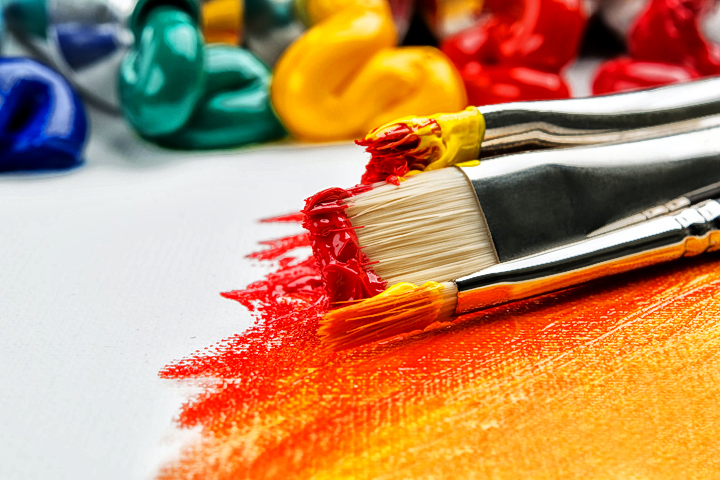As an artist, you’ll need to know how to mix and use different colors in your art. Orange is one of the brightest, most popular colors with many meanings. It has a liveliness that will make any artwork pop. But have you thought about what colors make orange?
It’s not as straightforward as it seems at first. You’ll need to know the correct colors and ratios to make orange.
Plus, there are so many different shades of orange out there. As a result, there are many different ways to make orange color paint. You’ll need to make adjustments depending on the exact shade you’d like to make.
So, here is a detailed guide on how to make orange color paint. You’ll find it helpful for all sorts of media, from watercolors to acrylic paint, fabric dyes, coloring pencils, and much more.
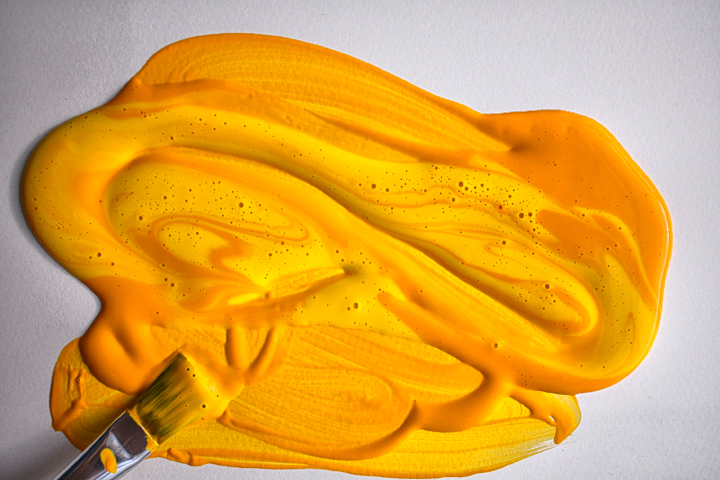
As you gain a greater understanding of how to mix colors, you’ll become more confident as an artist. So, let’s learn how to make orange color paint – with several methods for you to try.
The Significance and History of the Color Orange in Art
Artists have been using the vibrant color orange ever since ancient times. But it wasn’t as easy back then as it is now to make a color mix for orange.
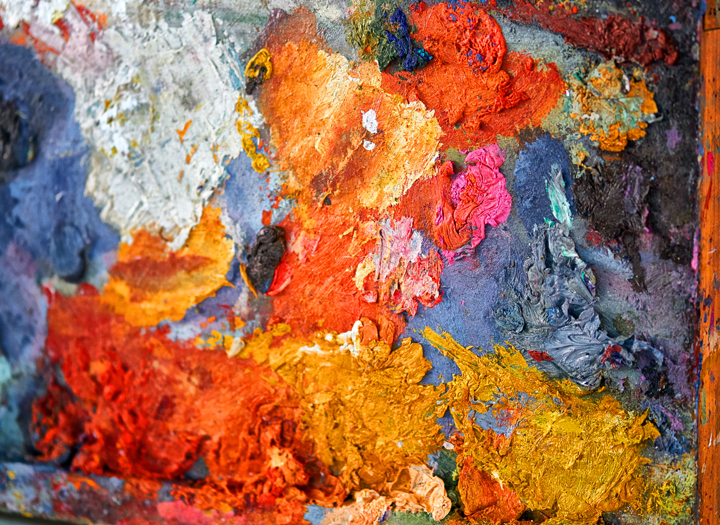
Ancient artists often used minerals and natural ingredients to make the orange color. Unfortunately, many of these minerals were toxic and caused serious health issues.
Despite this, orange was a sought-after color. And so, you’ll see it in all sorts of paintings across the ages.
But the word ‘orange’ wasn’t adopted until the Renaissance period. Before that, this distinctive color was referred to as yellow-red. So, that’s a hint of which colors make orange. It’s also an insight into how artists mixed the color orange mixed in the past.
Why Mix Your Own Orange Paint?
As you can see, artists throughout the ages have mixed orange paint. Often, they had to source natural ingredients. They even went to the lengths of using harmful products to achieve the perfect color. Some of these ingredients were even classified as poisonous substances.
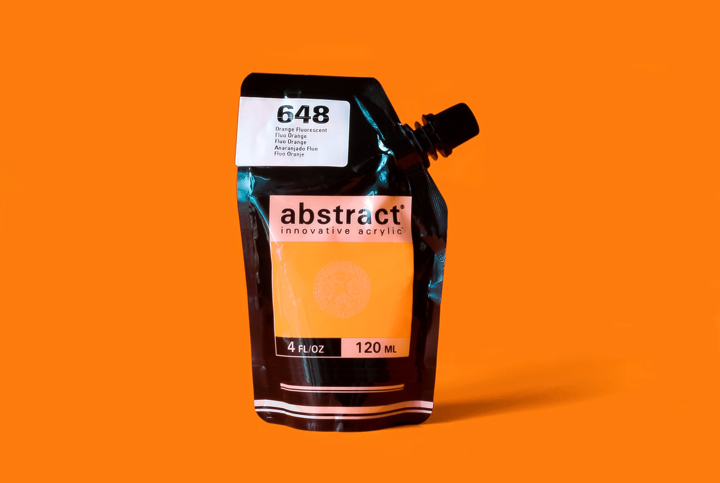
Nowadays, you can go out and buy orange paint. But then, you’re limited to the shades available in the store.
And as I mentioned, there are hundreds (if not thousands) of shades of orange. So, if you want to use a wider variety of shades, you should consider mixing your own paint.
If you do, you’ll have greater control over the colors you can use in your artwork. Want to get the perfect shade for your composition? Your best chance is by mixing it yourself.
But by mixing the paint yourself, you’ll also gain a deeper understanding of colors. Because color theory is a science that every artist needs to master.
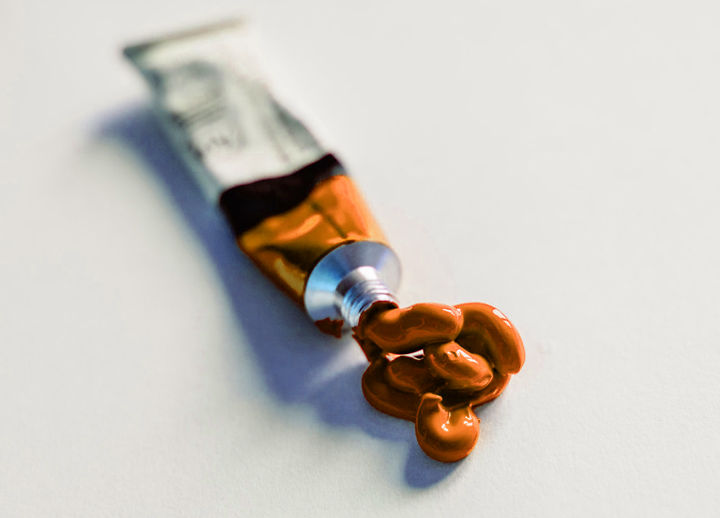
You’ll know what colors mix to make orange. But you’ll also come to understand how to make all sorts of shades, from pale to dark, muted to bright.
And you’ll find that your artwork will look even more vibrant and powerful as a result.
How to Make Orange Paint?
So, let’s dive in and look at how to make the color orange with paint. (But as mentioned, you can use this knowledge for other art mediums, too).
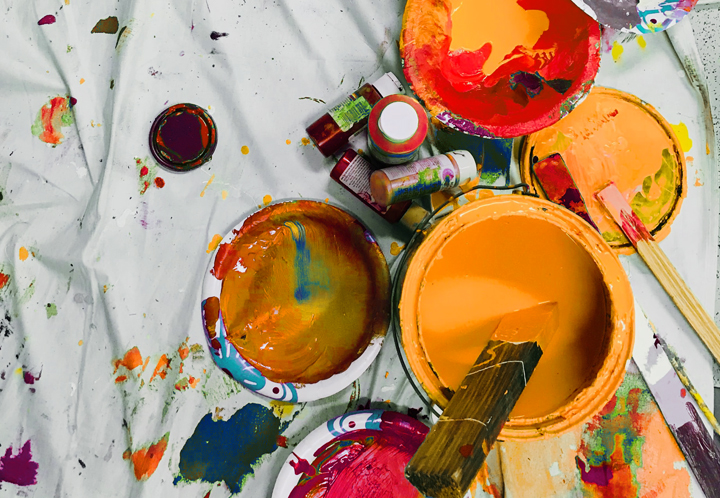
As you can see, there are as many shades of orange as you can imagine. So, there are several different ways to make orange paint.
When it comes to what colors mix to make orange, you have more than one option. So, I’ll provide a variety of methods for you to choose between. You can try them all out or pick the one that makes the right shade of orange for your artwork.
Plus, you can adjust these color combinations to work for you. For example, you could experiment by adding more or less of one color. Or, you could swap out a shade for something slightly different. You might be surprised by what you get!
And these color experiments will increase your artistic knowledge and understanding of colors. So, it’s well worth your time to play around with mixing different colors.
Red + Yellow = Orange
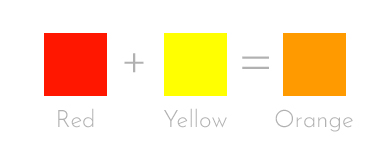
The most obvious place to start is by mixing red and yellow together. Red and yellow are two of the three primary colors. And the idea is that by combining these three colors, you can make almost any other shade possible.
Most young children will be familiar with the red + yellow = orange formula. They learn this in school when they first start experimenting with colors and paints.
So, the first color combination to try is an equal amount of red and yellow. You should get a lovely shade of orange as a result.
But there’s a lot more you can do with these two shades. You can adjust the amounts of red and yellow to get a wide range of different hues.
For example, you could try red and yellow in a 2:1 ratio. With this combination, you’ll get a reddy orange or a yellowish-orange. And already, you’re getting the hang of mixing colors in varying proportions. So, you’ll soon begin to notice how different the results can be.
But of course, there isn’t just one shade of red or yellow, either. Instead, countless reds range from traffic-light red to muted, earthy tones. And with yellow, they range from sharp citrus lemon to rich, warm ochre. I’ll go into more detail on different red-yellow combos below.
The stronger the red you use, the brighter your orange will look. The same goes for yellow. You’ll get a vibrant, rich orange if you use a brighter, warmer yellow.
Red + Yellow + Black = Dark Orange

Another color mixing lesson is to alter the color value, i.e., the tint of the orange color. You can do this by adding black to get a darker orange. The more black you use, the darker it will become.
If you want to try this, I would recommend starting with a tiny blob of black paint. Then, you can add more as needed.
But if you add too much too quickly, you’ll have a murky brown or black color. You could lose the orange shade altogether if you’re not careful! And once you’ve done that, it’s hard to return to what you had before. So, you’ll need to start over from scratch.
Red + Yellow + White = Pale Orange

If you want to create a paler orange, you can mix your red and yellow as desired. The next step is to add small amounts of white, mixing it in until the color is smooth. In this way, you can gradually lighten the shade.
This method is ideal if you want to create an orange gradient in your painting. You can mix the main color you’ll use. Then, you can take smaller amounts of your main color and add differing amounts of white (or black).
Once you have your different shades, you can apply them to the canvas. You’ll have a gradually lightening yellow – perhaps for a sunrise. It also works well if you want to add shadows or lighter areas to make your painting look more realistic.
Cadmium Yellow + Cadmium Red = Vivid Orange

Cadmium yellow and red is good base shades for making orange. These are a safe bet if you’re unsure which red or yellow to use.
Cadmium red is a true red – it’s bright and without any obvious undertones or tints. And the same goes for Cadmium yellow. It’s probably the exact shade you think of when you hear the word yellow.
So, when you mix the two, you’ll get a nice, rich, warm shade of orange. It’s a reliable, safe color combination when making orange paint. You’ll get consistently good results.
Cadmium Lemon + Cadmium Red = Bright Orange

By changing the yellow paint you use, you can create an entirely new shade of orange.
In this case, you could use the sharp, light cadmium lemon. Combining it with cadmium red will give you a bright, light shade of orange. It can bring vitality and energy to your painting.
Ochre + Cadmium Red = Dull Orange

Another option is to use ochre and Cadmium Red. As a result, you’ll get a much more subdued orange. That’s expected as ochre is such an earthy, natural tone. The ochre shade of paint is inspired by the clay pigment of the same name.
So, you get a calmer, more muted orange that’s not so in your face. But it’s still a rich shade with warm tones. It’s ideal if you have earthy or muted tones in your artwork, as it will complement the other shades well.
Remember that you must choose the right shade to harmonize with the other colors you use. So, you need to be intentional about that when mixing your orange paint.
Alizarin Crimson + Cadmium Yellow = Cool Orange

And just like if you change the color yellow, you’ll get a different orange if you opt for another shade of red. So, for example, you could try swapping Cadmium Red for Alizarin Crimson.
In contrast with Cadmium Red, Alizarin Crimson is a bit more nuanced. It has rich, fruity tones and can almost look like a deep pinky-red.
This color combination results in a cooler shade of orange. It looks slightly peachy and fresh. So, it’s ideal if you want to create a cooler color tone in your painting.
Burnt Sienna + Cadmium Yellow = Muted Orange

The next experiment to try involves using a shade of burnt sienna as your red. This earthy, rich tone will create a muted orange shade. It doesn’t have the same brightness and vitality, but that could be what you need.
This orange is perfect for nature paintings where you want an orange color that’s true to life. It’s closer to what you’d find in the natural world. In contrast, other shades work better if you want to reproduce a bright, man-made shade of orange.
Red + Green = Orange

There might be occasions when you want to mix orange, but you don’t have any yellow paint. In that case, you might think you’re stuck and don’t have many options. But you do, although there are a couple more steps to the process.
You can make orange even if you don’t have any yellow to hand. All you need is red and green, and you can still make orange.
First, you’ll need to mix the red and green until you have a yellowish shade.
Some More Tips for Making Orange
- If desired, you can add certain shades of blue to dull your orange color. It’s easier to do than adding black, which can easily make your color too dark. A dash of ultramarine or navy blue works well when combined with orange.
- If you mix orange and green, you’ll get a cooler color tone. It’s very earthy with a brownish tent. You may find these shades useful if you paint nature scenes a lot.
- You can use cooler shades of red and yellow to get a cool orange color.
- And equally, using warm reds and yellows will result in a rich, warm orange.
Using a Color Wheel
You could find a color wheel useful as you study colors and mix various combinations. This tool can help you understand how colors work together. And that will help you choose the right colors for your artwork.
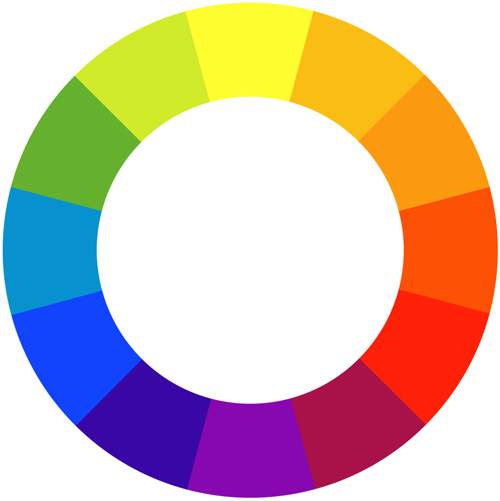
For example, complementary colors are on opposite sides of the wheel. You’ll see that orange is opposite blue, which tells you that these colors enhance each other. And it’s also why blue is a good color to tone down the brightness of orange paint.
Using Orange in Your Work
Orange is a color that evokes many emotions and can signify a range of different meanings.
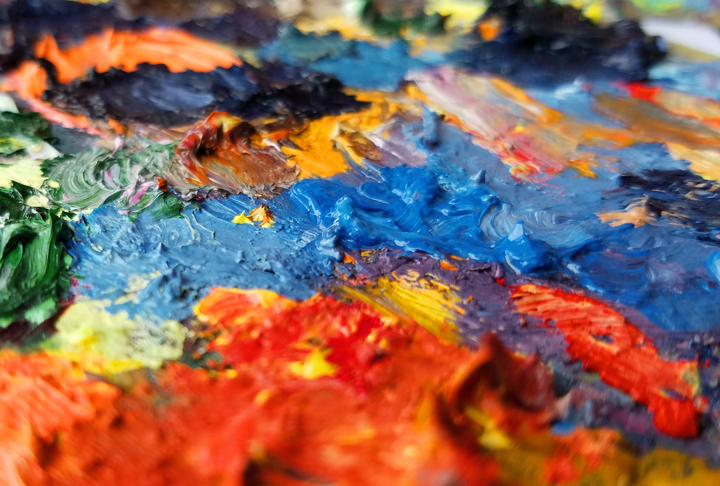
In certain countries, orange is a holy color, hence why Buddhist monks wear orange cloth. For Buddhists, orange signifies a burning flame, which is a symbol of truth.
It can also symbolize happiness, joy, and the vitality of life. It’s a warm color bursting with positivity and energy. Many artists use orange for sunsets, flowers, fruits, and other cheerful things.
But you could also use orange as a warning sign. If you mix a bold, bright orange, it can be very attention-grabbing. Think of traffic lights, cones, and flashing emergency lights. You can use orange to draw people’s attention or create an alarming image.
So, it all comes down to how you use orange in your artwork. There are as many shades of orange as you can imagine. They can range from gentle, soft orange shades to bold, almost-neon orange.
You can experiment with different ways to use orange in your work. It will vary greatly depending on your art style and the message you want to convey through your artwork.
How to Make the Color Orange – FAQ
If you’ve wondered how you make the orange color, this section is for you. I will cover some FAQs about how to make orange color by mixing paint.
Does red and yellow make orange?
Yes, you can mix red and yellow to make orange. It’s the simplest way to make your own orange paint. You can even layer red and yellow coloring pencils to create a unique shade of yellow.
What two colors make orange?
You can make orange in a variety of ways. But the easiest way is to mix red and yellow together, as these two primary colors make orange. You can vary the ratios to get a reddish-orange or a yellowy-orange.
How do you make bright orange paint?
You can make bright orange paint by carefully choosing rich, bright shades of yellow and red.
For the yellow paint, either Cadmium yellow or Cadmium lemon work well. And you can combine your chosen yellow with a bright, warm shade of red.
Avoid duller tones like burnt sienna or ochre, as they will result in a duller shade of orange.
How do you make a golden orange?
You can make a golden orange by mixing red and yellow together. But you’ll need to adjust the color ratio to have more yellow than red.
How do you make orange with acrylic paint?
It’s easy to make orange acrylic paint, even if you don’t have any orange paint to hand. Instead, you can mix together red and yellow to get orange.
You can add a little white or black if you want a brighter or more muted shade. You could also try mixing different ratios of red and yellow.
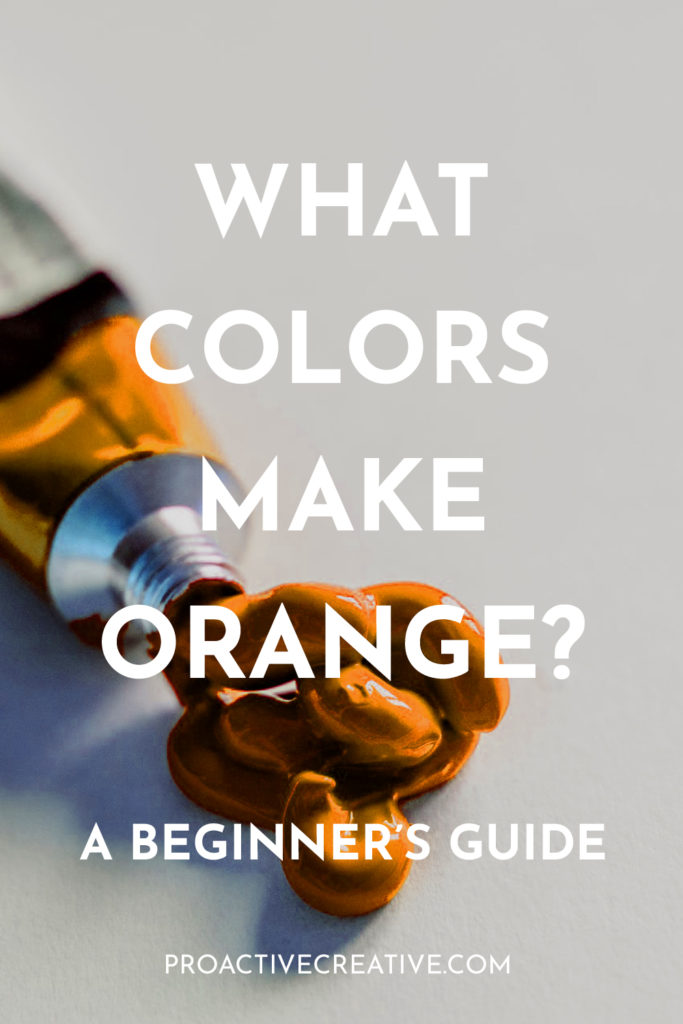
The Wrap Up
Orange is a rich color full of symbolism and meaning. It can vary from pale and subdued to bright and vibrant. And mixing your own orange paint is the best way to get the perfect shade!
Now, you should have a good understanding of how to make the orange color. And you can choose from this selection of methods for mixing orange paint. (If you prefer to work with a different medium, the theory should transfer across and work just as well).
So, go ahead and get mixing! Let me know how you get on making your own orange paint.
Make sure to follow Proactive Creative on Pinterest for more tips, tutorials, and reviews. I’ll keep you up to date on all the best content for creatives, from hobbyists to professionals.

